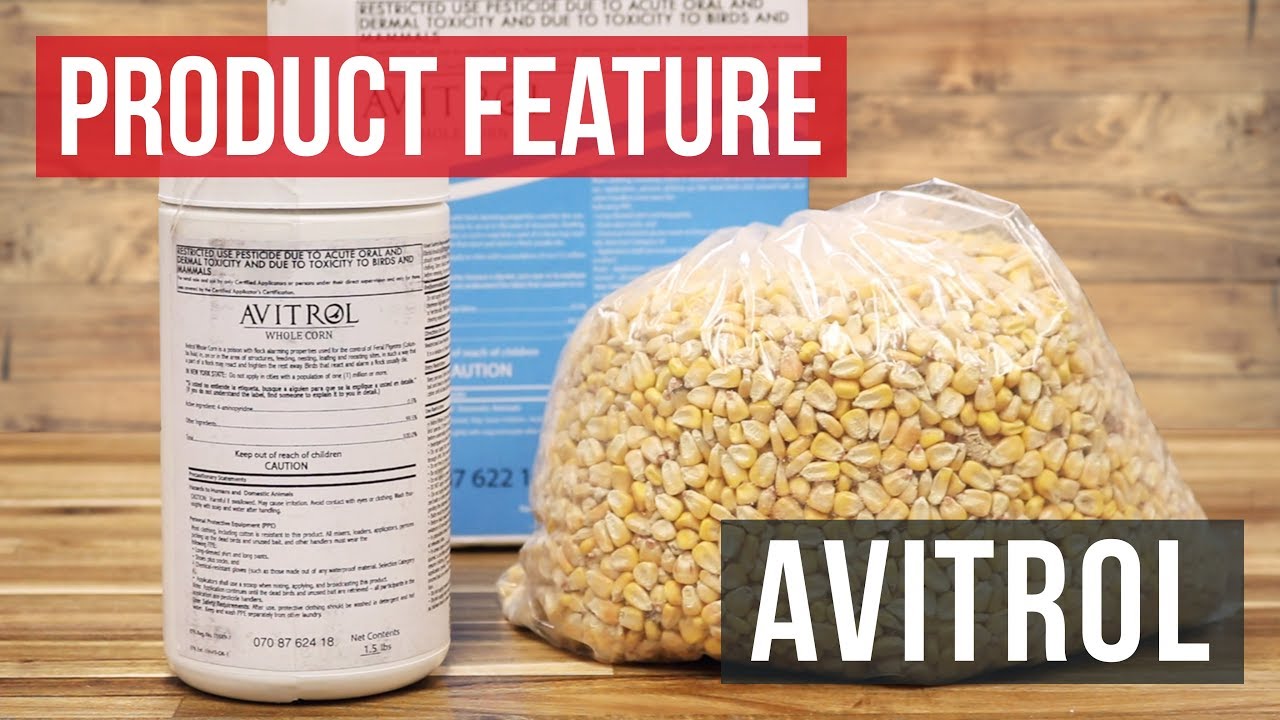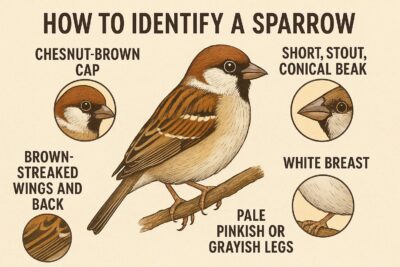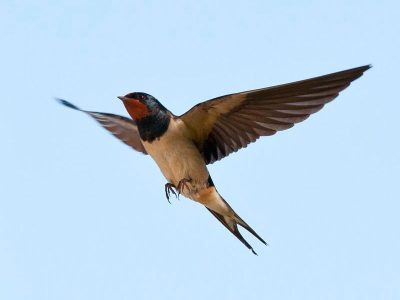Feral pigeons create significant health, sanitation, and property damage issues in urban and suburban areas. While lethal methods like poison exist, understanding the legal restrictions, risks, and more effective alternatives is crucial for responsible pigeon management. This comprehensive guide examines pigeon poison regulations, explores all control methods, and provides proven non-lethal strategies that deliver long-term results without the dangers associated with toxic substances.
Understanding the Pigeon Problem

Feral pigeons (Columba livia domestica) represent one of the most persistent urban pest bird challenges. These prolific breeders form large roosting colonies on buildings, under bridges, and in other structures, creating serious problems for property owners and public health officials.
The Scale of Pigeon Infestations
A moderate-sized pigeon population of just 100 birds can deposit over 2,500 pounds of feces annually. This waste accumulation creates multiple hazards:
Health Hazards
Pigeon droppings harbor dangerous pathogens including histoplasmosis, cryptococcosis, and psittacosis that cause serious respiratory infections and other illnesses in humans.
Safety Concerns
Accumulated droppings create slippery surfaces on walkways, stairs, and fire escapes, increasing liability risks for property owners through slip-and-fall accidents.
Property Damage
The acidic nature of pigeon waste corrodes building materials, damages paint, stains surfaces, and clogs drainage systems, leading to expensive repairs and maintenance.
Contamination Issues
Pigeons contaminate stored goods, food processing areas, and ventilation systems with droppings and nesting materials, creating unsanitary conditions.
Why Pigeons Are So Persistent
Pigeons possess remarkable homing abilities and breeding capacity that make them exceptionally difficult to eliminate once established. A single pair can produce multiple broods annually, with breeding occurring year-round in warm climates and primarily from March through July in cooler regions. Their strong site fidelity means pigeons return repeatedly to favored locations, even after removal attempts.
Federal and Local Legal Considerations
Understanding the legal framework surrounding bird control is essential before implementing any management strategy. The regulatory landscape significantly affects which methods you can legally employ.
Migratory Bird Treaty Act Overview
The Migratory Bird Treaty Act of 1918 (MBTA) protects over 1,000 bird species from harm, including prohibitions on pursuing, hunting, taking, capturing, killing, or possessing protected birds, their parts, nests, or eggs without federal permits.
Feral pigeons, European starlings, and house sparrows are NOT protected under the MBTA because they are non-native species introduced by humans. However, local jurisdictions may still impose restrictions on control methods, making it essential to verify local regulations before taking action.
According to the National Audubon Society, the MBTA remains the primary federal tool for protecting native bird species, but its provisions explicitly exclude introduced species that arrived through intentional or unintentional human intervention.
State and Local Regulations
While federal law permits pigeon control, many cities and municipalities have enacted stricter regulations:
- Poison Restrictions: Many jurisdictions prohibit or heavily regulate avicide use even for unprotected species
- Discharge Ordinances: City firearms restrictions typically prevent shooting within municipal boundaries
- Humane Treatment Laws: Some areas mandate humane control methods and prohibit cruel treatment of any animals
- Sanctuary Designations: Certain localities provide protection to all bird species regardless of federal status
Before implementing any pigeon control measure, consult your local animal control authority, city ordinances, and state wildlife regulations to ensure compliance. Violations can result in significant fines and legal consequences.
Pigeon Poison: Types, Regulations, and Risks
Avicides—chemical substances designed to kill birds—remain legal in the United States but face severe restrictions and carry substantial risks that make them inappropriate for most situations.
Federally Approved Avicides
Only two avicide compounds maintain EPA registration for pigeon control, both requiring professional application by licensed applicators.
4-Aminopyridine (Avitrol)
Avitrol represents the only commercially available pigeon poison accessible through licensed pest control operators. The National Geographic extensively covered this controversial substance, documenting its effects and growing opposition to its use.
| Characteristic | Details |
|---|---|
| Classification | Restricted Use Pesticide (RUP) – Licensed applicators only |
| Mechanism | Acute oral toxicant affecting central and motor nervous systems |
| Intended Effect | Chemical frightening agent – causes distress behaviors to scare flock |
| Symptoms | Convulsions, erratic flight, trembling, loss of motor control, death |
| Time to Death | Minutes to hours from ingestion |
| Non-Target Risk | Toxic to all vertebrates including pets, wildlife, and children |
The avicide works by causing affected birds to exhibit violent seizures, emit distress calls, and display erratic behavior intended to frighten remaining flock members away from the treated site. However, this mechanism often results in visibly distressing deaths that generate significant public outcry.
DRC-1339 (Starlicide)
The USDA Wildlife Services developed DRC-1339 as a slow-acting avicide with limited availability restricted primarily to USDA personnel and specific authorized applications.
According to University of Nebraska research, DRC-1339 causes death through kidney damage and uremic poisoning occurring 1-3 days after ingestion. While considered more “humane” due to less violent symptoms, it still poses significant non-target risks and environmental concerns.
| Feature | Avitrol (4-Aminopyridine) | DRC-1339 |
|---|---|---|
| Availability | Licensed pest control operators | USDA Wildlife Services primarily |
| Primary Purpose | Flock frightening | Lethal control |
| Death Timeline | Minutes to hours | 1-3 days |
| Symptoms | Violent, highly visible | Slow organ failure |
| Public Impact | High – visible suffering | Lower – delayed effects |
| Non-Target Risk | High for all vertebrates | Moderate to high |
Critical Disadvantages of Pigeon Poison
Despite legal availability, pigeon poisons present serious drawbacks that limit their practical utility and ethical acceptability:
- No Homeowner Access: Federal restrictions prohibit homeowners from purchasing or applying avicides without proper licensing and certification
- Non-Target Poisoning: All avicides pose serious risks to protected birds, pets, wildlife, and children who may consume contaminated bait
- Secondary Poisoning: Predators and scavengers feeding on poisoned birds can die from accumulated toxins
- Public Backlash: Visible suffering of poisoned birds generates intense community opposition and potential legal action
- Temporary Results: Killing individual birds doesn’t address attractants, allowing new pigeons to quickly repopulate the area
- Environmental Contamination: Improperly managed baits and carcasses create environmental hazards
- Regulatory Violations: Misuse carries severe penalties including fines, criminal charges, and civil liability
Why Lethal Methods Fail Long-Term
Lethal pigeon control methods share a fundamental flaw: they address symptoms rather than root causes. Understanding why killing pigeons doesn’t solve pigeon problems reveals the necessity of alternative approaches.
The Population Replacement Cycle
Pigeons demonstrate remarkable reproductive capacity and site fidelity that render individual removal ineffective:
- Pigeons breed year-round in warm climates, producing multiple broods of 2 eggs each approximately every 46 days
- A single pair can theoretically produce 12+ offspring annually under ideal conditions
- Removing birds from areas with abundant food, water, and shelter creates immediate vacancies that new pigeons quickly fill
- Surrounding pigeon populations expand into newly available territory within days of removal efforts
- Young pigeons from established colonies disperse to find new territories, readily occupying cleared sites
The Attractant Factor
Properties that attracted initial pigeon populations continue drawing replacement birds until underlying conditions change. Essential attractants include:
- Food Sources: Intentional feeding, accessible garbage, spilled birdseed, pet food, compost, agricultural products
- Water Access: Fountains, birdbaths, puddles, drainage areas, air conditioning condensation
- Shelter Availability: Flat roosting surfaces, protected nesting sites, building ledges, eaves, overhangs
- Safety Features: Absence of predators, low human disturbance, elevated locations away from ground threats
Lethal control removes individual pigeons but leaves these attractants intact, creating an endless cycle of removal and replacement that wastes resources while failing to achieve lasting results.
Effective Non-Lethal Pigeon Deterrents
Sustainable pigeon management focuses on making properties genuinely unsuitable for occupation through environmental modification, exclusion, and deterrents that address root causes rather than symptoms.
1. Eliminate Food Sources

Food availability drives pigeon population density more than any other factor. Comprehensive food source elimination represents the single most important control measure:
Food Source Elimination Strategies
- Stop Intentional Feeding: Never feed pigeons or other birds if you want to discourage their presence
- Secure Garbage: Use tightly sealed trash containers and ensure lids close completely
- Cover Compost: Enclosed composting systems prevent pigeon access to decomposing food materials
- Manage Bird Feeders: Use feeders designed to minimize ground spillage or remove entirely during pigeon control efforts
- Secure Pet Food: Feed pets indoors or remove dishes immediately after outdoor feeding sessions
- Clean Food Areas: Promptly clean outdoor dining areas, picnic spaces, and any locations where food accumulates
- Address Agricultural Sources: Properly store animal feed, cover grain storage, and minimize spillage during feeding operations
2. Physical Exclusion Systems
Preventing pigeons from accessing roosting and nesting sites eliminates their ability to establish territories on your property.
Bird Netting
Heavy-duty nylon or polyethylene netting creates impassable barriers over large areas. Install netting over courtyards, loading docks, warehouse openings, and other substantial spaces where pigeons congregate. Ensure proper installation with no gaps and verify netting doesn’t block critical ventilation or emergency exits.
Bird Spikes
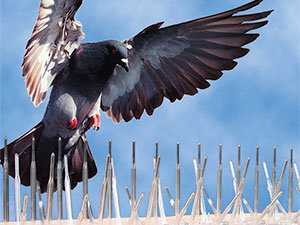
Plastic or stainless steel spike strips make ledges, signs, beams, and other flat surfaces physically uncomfortable for landing and roosting. Quality spike systems feature:
- Multiple rows of closely-spaced prongs preventing foot placement
- UV-resistant materials maintaining effectiveness for years
- Easy installation with adhesive or mechanical fasteners
- Available widths matching various surface dimensions
Angled Barriers (Bird Slides)
Install wood or metal sheeting at 45-60 degree angles over window ledges, AC units, and architectural features to prevent landing. The sloped surface denies pigeons stable footing, forcing them to seek alternative locations.
Wire Systems
Parallel wire installations create unstable landing platforms that pigeons avoid. Spring-tensioned wires positioned 2-3 inches above surfaces move when birds attempt landing, creating an uncomfortable experience that drives them away.
Sticky Gel Deterrents
Non-toxic polybutene gels create tacky surfaces pigeons find unpleasant. Apply to ledges, beams, and roosting areas following manufacturer instructions. Note that gel requires periodic reapplication and may collect dust and debris over time.
Physical exclusion works best when implemented comprehensively. Pigeons will exploit any unprotected areas, so systematic coverage of all potential roosting and nesting sites is essential for success.
3. Visual and Auditory Deterrents
Scare tactics exploit pigeons’ wariness of unpredictable threats and natural predators. Success requires understanding proper application and rotation strategies.
Reflective Deterrents
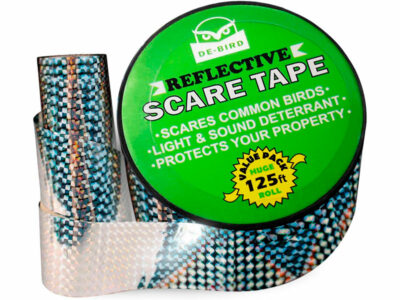
Reflective tape, holographic streamers, and metallic balloons create flashing light patterns that disturb pigeons. Install in areas with good air movement where materials will move unpredictably. Rotate positions weekly to prevent habituation.
Predator Decoys
Realistic owl, hawk, and snake decoys trigger instinctive avoidance responses. Maximize effectiveness by:
- Moving decoys to new positions every 3-5 days
- Using multiple decoy types in rotation
- Positioning at appropriate heights and orientations
- Combining with other deterrent methods
Motion-Activated Devices
Modern motion sensors trigger ultrasonic sounds, water jets, or LED light displays when pigeons approach. These automated systems provide consistent deterrence without requiring manual operation, though they work best in smaller targeted areas rather than expansive spaces.
Propane Cannons
For agricultural or large rural properties, propane cannons produce loud reports at programmable intervals. Their effectiveness extends across 7-10 acres, making them suitable for vineyards, orchards, and field crops. Check local noise ordinances before deployment.
All scare tactics lose effectiveness if pigeons become accustomed to them. Success requires diligent rotation, repositioning, and varying the deterrent types used. Static installations rarely provide lasting control.
Scent-Based Deterrents
Methyl anthranilate, a grape-scented compound, shows some efficacy as a pigeon repellent when applied to roosting areas. Available in spray form, it creates an unpleasant sensory experience that encourages pigeons to seek alternative locations. Note that effectiveness varies and reapplication after rain is necessary.
Frequently Asked Questions
Is it legal to poison pigeons?
Feral pigeons are not protected under federal law, making pigeon control legally permissible. However, only licensed pest control professionals can apply the two EPA-registered avicides (Avitrol and DRC-1339) for pigeon control. Homeowners cannot legally purchase or use these restricted-use pesticides.
Additionally, many cities and states have enacted local restrictions on avicide use even for unprotected species. Always verify local regulations before considering any lethal control methods, as violations can result in significant fines and legal consequences.
Why shouldn’t I use pigeon poison?
Beyond legal restrictions, pigeon poison creates serious problems including high risk of non-target poisoning (pets, children, protected birds), secondary poisoning of predators and scavengers, intense public backlash from visible bird suffering, and most critically, failure to provide long-term control since new pigeons quickly replace killed birds.
Non-lethal methods addressing root causes—food sources, roosting sites, and reproduction—deliver superior long-term results without the risks, ethical concerns, and community opposition associated with poison use.
What is the most effective way to get rid of pigeons?
The most effective pigeon control combines multiple non-lethal approaches: eliminating all food and water sources, installing physical barriers (netting, spikes, wire systems) on roosting and nesting sites, deploying visual and auditory deterrents with regular rotation, and for established populations, implementing contraceptive feeding programs.
This integrated approach addresses why pigeons occupy your property rather than simply killing individual birds that will quickly be replaced. Success requires comprehensive implementation and ongoing maintenance.
How long does it take to get rid of pigeons?
Timeline varies based on population size and methods used. Physical exclusion provides immediate results for protected areas. Food source elimination shows effects within 2-4 weeks as pigeons seek alternatives. Visual deterrents work within days but require rotation. Contraceptive programs require 6-8 months to significantly reduce populations through attrition.
Most properties see substantial improvement within 4-6 weeks when implementing comprehensive integrated strategies, with complete control achieved over 3-6 months depending on severity.
Are pigeon droppings dangerous?
Yes, pigeon droppings pose significant health risks. They harbor fungi causing histoplasmosis (serious lung infection), cryptococcosis (affecting lungs and brain), and psittacosis (flu-like bacterial infection). Dried droppings become airborne dust easily inhaled during cleaning or routine activities.
Additionally, droppings are highly acidic and corrosive, damaging building materials, vehicles, and surfaces. They create slip hazards when accumulated on walkways. Always wear respiratory protection, gloves, and protective clothing when cleaning pigeon waste, and consider professional remediation for large accumulations.
Do ultrasonic devices work for pigeon control?
Ultrasonic devices show limited effectiveness for pigeon control. While manufacturers claim these emit sounds uncomfortable to birds, scientific studies demonstrate pigeons habituate quickly to consistent sounds and may even ignore them entirely. Ultrasonic frequencies also don’t travel well through outdoor environments.
Motion-activated devices combining ultrasonic sounds with visual deterrents (lights, moving parts) or water jets prove more effective than ultrasonic-only systems. However, all electronic deterrents work best as components of comprehensive control programs rather than standalone solutions.
Can I relocate pigeons instead of killing them?
Relocating pigeons is generally ineffective due to their remarkable homing abilities. Adult pigeons can return to their established territory from distances exceeding 600 miles. Even young pigeons show strong site fidelity and typically attempt returning to familiar areas.
Relocation also simply transfers your problem to another location and may be illegal under local wildlife regulations. Focus instead on habitat modification making your property unsuitable for occupation, which encourages pigeons to naturally relocate to other areas on their own.
How much does professional pigeon control cost?
Professional pigeon control costs vary widely based on property size, infestation severity, and methods employed. Basic inspection and consultation typically ranges $100-$300. Physical exclusion installations (netting, spikes) cost $500-$5,000+ depending on area covered. Comprehensive programs including deterrents, exclusion, and monitoring range $1,000-$10,000+ for commercial properties.
Contraceptive feeding programs require ongoing costs of $200-$500+ monthly for bait and maintenance. While professional services represent significant investment, they typically prove more cost-effective than repeated DIY attempts or ongoing damage repair from uncontrolled infestations.
Will getting rid of food sources alone solve my pigeon problem?
Eliminating food sources is critically important but rarely sufficient alone. While food availability drives pigeon populations, pigeons also require water and shelter. Properties offering safe roosting and nesting sites will continue attracting pigeons even with limited food, as birds forage over wide areas and can survive on minimal sustenance.
Effective control requires addressing all three essential resources: food, water, and shelter. Combine food source elimination with physical exclusion from roosting sites and deterrents for comprehensive, lasting results.
Conclusion
Effective pigeon control requires understanding that lethal methods, particularly poison, provide only temporary relief while creating significant risks and ethical concerns. Avicides remain heavily restricted, dangerous to non-target species, and fundamentally ineffective for long-term population management because they fail to address why pigeons occupy properties in the first place.
- Feral pigeons aren’t protected federally, but local laws may restrict control methods including poison
- Only licensed professionals can apply EPA-registered avicides; homeowners cannot legally use pigeon poison
- All lethal methods (poison, shooting, trapping) provide temporary results as new pigeons replace killed birds
- Sustainable control addresses root causes: food sources, roosting sites, and reproduction
- Physical exclusion (netting, spikes, barriers) delivers immediate, lasting protection for specific areas
- Contraceptive programs humanely reduce populations without the problems associated with lethal removal
- Comprehensive integrated approaches combining multiple methods provide superior long-term results
- Successful pigeon management requires ongoing commitment, maintenance, and adaptation
Rather than pursuing restricted, dangerous, and ultimately ineffective poison options, property owners achieve better results through systematic implementation of non-lethal integrated strategies. By eliminating attractants, installing physical barriers, deploying properly rotated deterrents, and when appropriate, implementing contraceptive feeding programs, you can achieve lasting pigeon control that protects property, public health, and community values.
The investment in comprehensive non-lethal approaches pays dividends through sustained effectiveness, avoided legal risks, eliminated disposal problems, positive community relations, and the satisfaction of solving pest problems humanely and responsibly.
